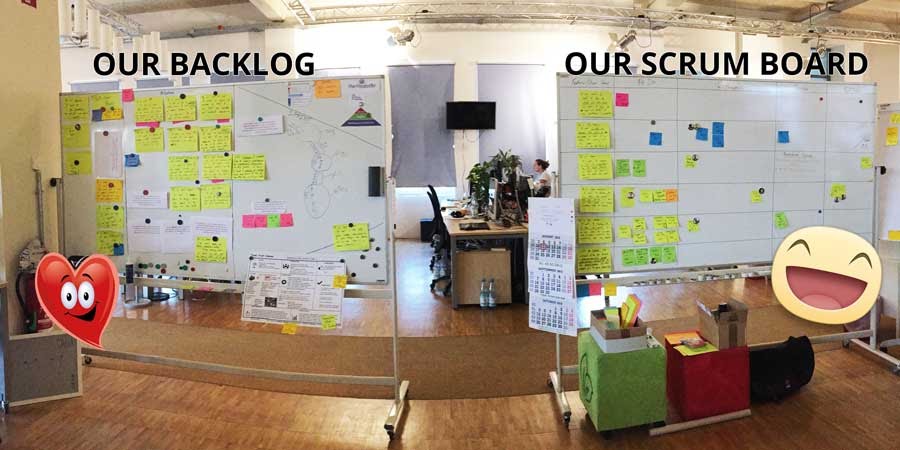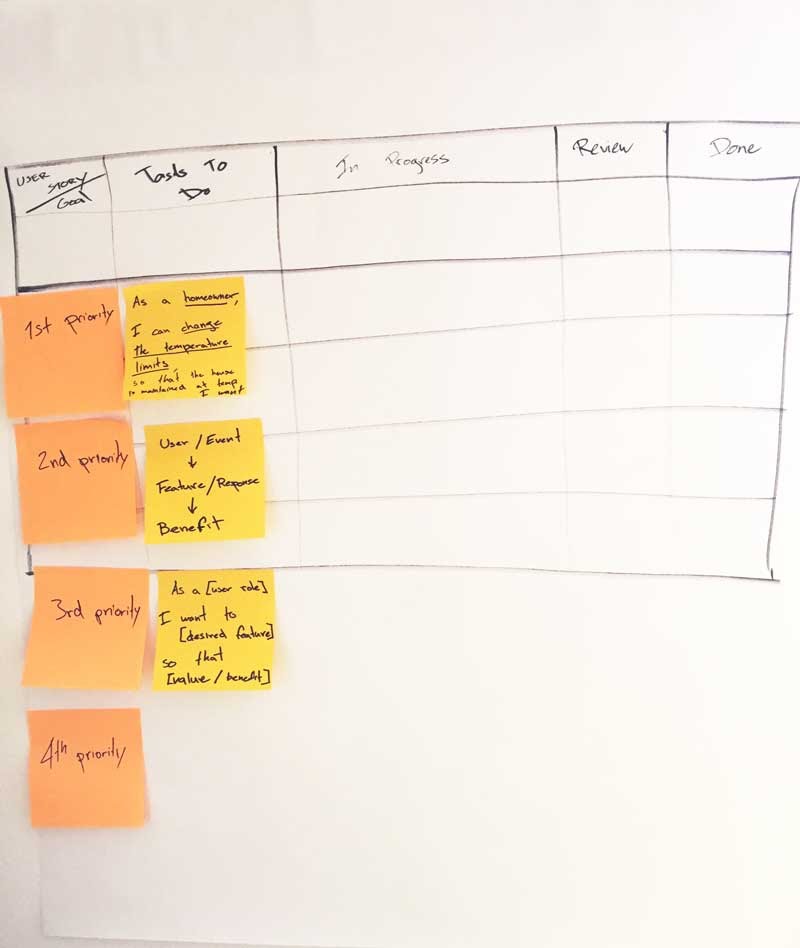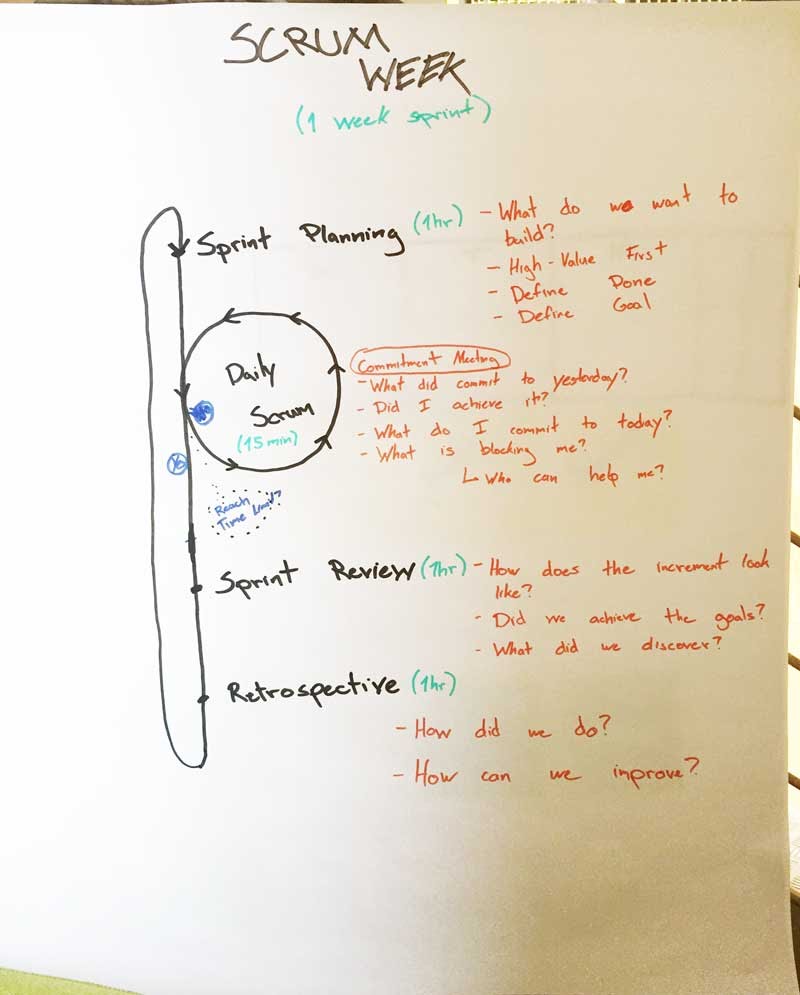Here’s a quick rundown of SCRUM in 5 pictures. There will definitely be a lot of fine details that I will be missing out but this is how I would distill it to the “need to knows” to someone who is just starting or just joining the team.
Before we start, for those who are asking what’s “scrum”? Scrum is the most sought after agile software development framework and management style. It’s popular for games, web projects, apps and finding the next big “thing” in the digital world. The advantages is that it allows teams to be fast and adaptable to both their product and their processes.
Now back to the those pictures. Ready? Go.
1. The Team
This is the core element that makes magic happen. Naturally assembling together a group super talented people is the first thing to comes to mind, but if “innovating” and developing something different is the prime objective of a project then each individual member needs to be more than just talented. The group needs to share the following mindset for scrum to be effective:
- Be able to collaborate with each other to solve a problem (Self-organize)
- Be able to change direction based on customer needs (Flexible)
- Be comfortable in open communication (Transparent)
- Be comfortable with failing and learning A LOT (Agile…hehe)
If you can build a team with these type of strong values, then scrum would work very well in trying to build something different and built it quickly.
There are three roles in scrum:
- Product Owner – the voice of the customers and the manager who prioritizes work items to drive value (build the right thing)
- Scrum Master – the team facilitator that maintains the scrum framework and the inspect-and-adapt mentality (build it fast)
- Scrum Team – the group of skilled individuals who work to together to solve a given problem (build the thing right)
How these people coordinate we’ll go into next.
2. Product Management (Backlog)

Here you see two boards. The backlog on the left and the scrum board right. The backlog contains a prioritized list of user stories that the team collectively solves that results into creating a feature for the product or a tool for the workflow to be more efficient.
The is a lot more detail about user-stories regarding about how it’s formed and how we prepare for it, but for the sake of this post we’ll skip that for now and I can reserve it for next time.
What you need to know based on this picture is that the backlog board is prioritized from right (do sooner) to left (do later). It’s the Product Owner’s job to make sure the the user stories are achievable by a team at a given sprint, which is usually a week or two. With this team, we created a funnel like shape leading towards the right to visualize that only a certain amount can be done for a given milestone (1-3 months) and reminder to the team that it’s in their best interest to split user-stories if they realize that it’s too big.
When the team is ready to work on the new user-stories, they can bring it to the scrum board.
3. Task Management (Scrum Board and Morning Stand Up)

The scrum board is the tool that the team uses to track their progress at a given sprint. Their objective is to move the declared tasks from the “To-do” column into “Done”, and satisfy the goal of the user story. It is the team’s responsibility to update this board regularly in order to coordinate their work with each other and be able to unblock anyone that’s stopping them from achieving the goal.
4. Weekly Structure
A sprint is a time frame that the team agrees to do their work. Within a sprint there are key meetings that helps the team to plan, coordinate while executing, evaluate the product, reflect on their process and come back full circle into planning. The picture below shows the main details of a typical 1-week scrum.
A general rule of the thumb is that for every 1 week that is used in a sprint, 1 hour is the recommended time for each key meeting (Planning, Review, Retrospective). So if the team declares to do 2 weeks, then 2 hours is recommended for these meetings. And etc.
It’s recommended that sprint does not go longer than 3 weeks so that they don’t spend too long in key meetings. Long meetings usually leads to boredom and big issues that the team could have avoided earlier on if their sprints were shorter.
Which brings us to customizing our A-game.
5. Customize Your A-Game
In the end, what works wonders about this framework is that it promotes a high-paced rhythm for the team to continuously improve their product and their process. Which is where the loop from the review and retrospective back into planning is where great things can happen.
In the Review, the team tests and demonstrates the outcome of a sprint to the client and gathers feedback. Based on the results of the review, the product owner and the team can go back to the backlog and prioritize what the next most valuable thing is to work on. This approach is why scrum is so popular, it’s because it a flexible framework that allows us to build something fast.
In the retrospective, the team talks to each other in order to evaluate the way they work. Personally, this is my most favourite ceremony. As it allows the the team discuss honestly how they think they are working and how they can improve in order to be better overall. This aspect is usually over-look and underestimated and works wonders when the team is able to work really work together through smooth and challenging times. And sometimes that’s all it takes to make great things happen.
That’s it!
This wasn’t exactly brief but this would be the usual flow I would get into to explain scrum and how the fundamentals should be set up. However, also baring in mind that the scrum framework helps evolve the team’s workflow and is customized based on their current setup. Any changes in people or tools means that there will most likely need to be changes in the way they work. And when they trust in the framework and a diligent to evaluate both the product and the way they work, the likelihood of success is well controlled and can be faster.



